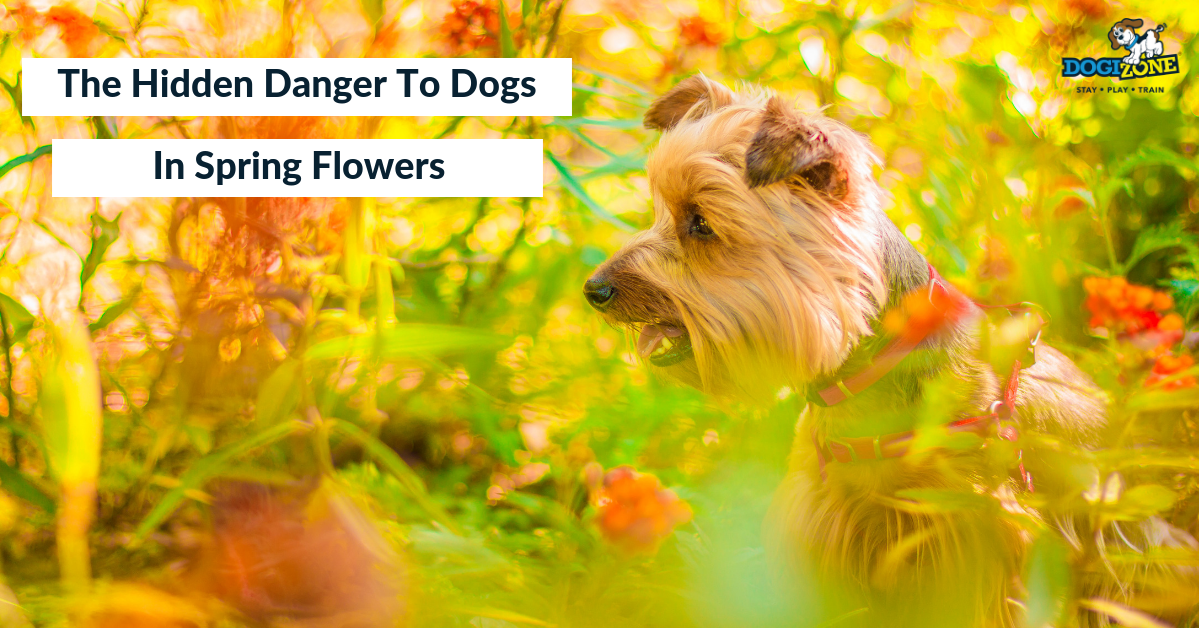The Hidden Danger To Dogs In Spring Flowers
Spring is a welcome time of the year, with the cold days of winter in the past and the warmer days of summer just around the corner. Spring is also a time for a range of different wildflowers and garden flowers to start blooming and making the world around us look colorful. 
If you have dogs and are out walking or deciding on what plants to put in your garden, there are a few toxic species to be careful to avoid. Contrary to the popular myth, dogs do not have the ability to detect toxic plants and can and will eat them, often with tragic results.
In most cases, particularly with native spring wildflowers, the results of ingestion do not result in death, but they can include seizures, vomiting, skin conditions and respiratory problems. Dogs with concurrent health issues, immunity problems, or small dogs, puppies and older dogs are at higher risk of a more significant reaction.
Toxic Wildflowers to Avoid
Milkweed is a plant that can be found in wet conditions, often along rivers or swamps. There are over 70 different species of this native plant throughout the United States. Milkweed is a tall, upright plant with globe-like flowers that can be white, pink, orange, yellow, purple or red.
While an important source of food for Monarch butterflies, it is very toxic to dogs and cats as well as horses and other domesticated and wild animals.
Buttercups are cheery, small yellow flowers that are also found across the country. They are often seen as a favorite flower for kids to collect, but the leaves of the buttercup are very toxic when crushed, and the liquid comes in contact with the skin. This can cause dermatitis on both dogs and people, as can all flowers of the Ranunculus species, including the showy flowers you may plant in your garden or flower pots.
Morning glory plants are a vine with small to large trumpet-shaped flowers, and they come in a wide range of colors. The species is native in the southern areas of the country and planted annually in the more northern areas.
With this particular flowering plant, it is the seeds that are toxic, and even a small amount ingested can result in vomiting, loss of appetite, lack of coordination, muscle control loss and tremors. Larger amounts of seeds or more frequent consumption of the seeds can result in liver failure.
Nightshade
Not the tomato specifically, but rather the plant and flower more commonly known as Atropa belladonna, is highly poisonous to both dogs as well as people. It is a large shrub-like plant that has dark green leaves that may also have a purple coloration. The flowers are purple, and the berries are a dark, glossy black.
All parts of the nightshade plant are very toxic to dogs. It can quickly result in life-threatening symptoms including rapid respiration, blindness, convulsions, paralysis, cardiac arrest, and death. As this can occur in a very short period of time, it is essential to get your dog to a vet immediately and provide information on the plant, berries, or roots the dog was eating.
Ask your local agriculture extension office for more information on poisonous wildflowers in your area. When choosing plants for your garden and landscaping, check online to make sure they are safe for your dogs.
Comment on our social media pages. Facebook, Twitter & Instagram.

